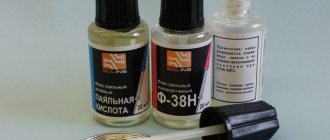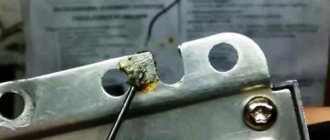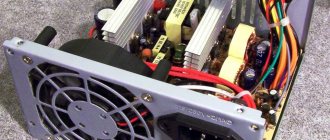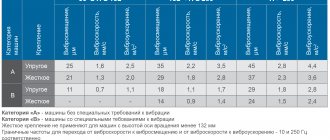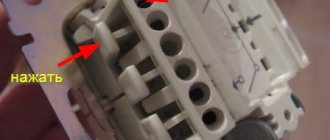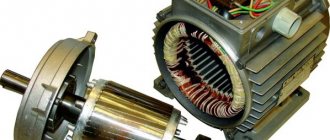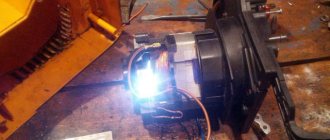What is flux and its key features
The main purpose of the flux is to use it for soldering several materials. The structure consists of easily alloyed materials, which can be made independently. Soldering flux is used to join products by maintaining a certain temperature at the seam level. Depending on the structure and hardness of the substance, the soldering temperature starts from 50 ⁰C and reaches 500 ⁰C. The temperature readings of the solder are taken into account higher than those of the material, only then is it possible to begin the soldering process.
The choice of a suitable structure depends on several factors; soldering flux is divided into many structures. Main parameters:
- Temperature of the soldering process.
- Type of metal.
- Temperature operating conditions of the substance.
- Surfaces of parts adjacent to the product.
- The material's resistance to corrosion, protection of surfaces from oxidation and its strength.
Flux paste
The state is divided into hard, having a threshold for high temperatures, and soft, when the flux melts at low temperatures. In order to understand what fluxes are, it is necessary to study all the properties and purpose of the material.
Purpose
The process of soldering with refractory types of solder occurs at temperatures above 500 ⁰C. Due to the influence of temperatures and the properties of the substance, the result is a durable type of connection. The disadvantage of this application is that the part may overheat and work incorrectly after assembly.
Soldering flux is used as an easily alloyable variety in the field of installation of radio equipment and other small works. Temperature operating conditions are up to 500 ⁰C, which allows you to avoid damaging connections and boards. The main impurities during operation are lead and tin. Super low-melting types are used when working with transistors and other compounds; the oxidation surface temperature does not reach 150 ⁰C.
Flux for soldering microcircuits
Flux for soldering thin surfaces is used in an easily alloyed form; solid-state, volumetric parts are soldered with hard types of solders. Why do you need flux and the main required characteristics:
- High rates of heat transfer and electrical current conductivity.
- Strong connection.
- Acceptable stretch size.
- Resistance to corrosion processes of materials.
- The melting temperature indicators must differ from the softening of the material.
A common form for the production of soldering agent is a tin rod, the cross-sectional diameter is used from 1 to 5 mm. There are several other types such as wire spools, rosin tubes, ribbons and others.
Tin solder
There are multi-channel solders; the product design consists of certain materials and is used for more reliable soldering. These products are sold in a spiral form, contained in flasks and coils. Soldering of electrical circuits occurs using a tube type of composition. Due to the presence of rosin resin, the connection of copper, silver or brass materials is much more reliable.
Main characteristics and scope of solders
| Melting point, °C | Tensile strength, kg/mm | Application | ||
| POS-90 | Tin - 80...91, lead - the rest | 220 | 4,9 | For soldering food utensils and medical instruments |
| POS-61 | Tin - 60... 62, lead - the rest | 190 | 4,3 | For tinning and soldering in equipment where overheating is unacceptable |
| POS-40 | Tin - 39...41, lead - the rest | 238 | 3,8 | For soldering in electrical equipment and parts made of galvanized steel |
| POS-ZO | Tin - 29...31, lead - the rest | 256 | 3,3 | For tinning and soldering parts made of copper and its alloys and steel |
| POS-10 | Tin - 9...11, lead - the rest | 299 | 3,2 | For tinning and soldering contact surfaces in electrical equipment |
| POS-61M | Tin - 60...62, copper - 1.2...2, lead - the rest | 192 | 4,5 | For tinning and soldering with an electric soldering iron thin copper wires, printed conductors and foil |
| POSK 50-18 | Tin - 49...51, cadmium - 17...19, lead - the rest | 145 | 6,7 | For soldering heat-sensitive parts |
| POSSr-15 | Tin - 15, zinc - 0.6, lead - 83.1 5, silver - 1.25 | 276 | — | For soldering zinc and galvanized steel parts |
| Avia-1 | Tin - 55, zinc - 25, cadmium - 20 | 200 | — | For soldering thin-walled parts made of aluminum and its alloys |
| Avia-2 | Tin - 40, zinc - 25, cadmium - 20, aluminum - 1 5 | 250 | — | Same |
| 34A | Copper - 27...29, silicon - 5...7, aluminum - the rest | 525 | For soldering parts made of copper and its alloys with high requirements for joint strength | |
| MF1 | Phosphorus - 8.5...10, copper - the rest | 800 | — | For soldering parts made of copper and steel with low strength requirements |
| PSr-25 | Copper - 40, silver - 25, zinc - 35 | 780 | 28 | For soldering parts made of steel, copper and its alloys with high requirements for strength and corrosion resistance |
| Wood's alloy | Tin - 12.5, lead - 25, cadmium - 12.5, bismuth - 50 | 60,5 | _ | For soldering applications where a very low melting temperature of the solder is required |
| Alloy d'Arce | Tin - 9.6, lead - 45.1, bismuth - 45.3 | 79 | — | Same |
Note. The following impurities are allowed in POS brand solders (%): bismuth - 0.1. arsenic - 0.05, iron, nickel, sulfur - up to 0.02, zinc, aluminum - up to 0.002, copper - up to 0.05. In PSr-25 grade solder, no more than 0.5% impurity is allowed, including no more than 0.15% lead.
FLUX is a substance or mixture designed to dissolve and remove oxides from the surface of parts being soldered. It must reliably protect the surfaces of parts and solder from oxidation during the soldering process. The choice of flux depends on the metals or alloys being joined by soldering and the solder used, as well as on the type of installation and assembly work. The melting point of the flux must be lower than the melting point of the solder. Fluxes are divided into active (acidic), acid-free, activated and anti-corrosion.
Active fluxes intensively dissolve oxide films on the metal surface, thereby achieving high mechanical strength of the joint. Such fluxes are used when it is possible to completely remove their residues from the surface of the parts to be joined and the soldering area. When installing and repairing household electronic equipment and radio equipment, active fluxes cannot be used.
Acid-free fluxes are made on the basis of rosin, which, during soldering, cleans the surface of oxides and protects it from oxidation. They are widely used in the installation of radio equipment. Removing these fluxes after soldering is not necessary.
Activated fluxes are made on the basis of rosin with the addition of activators. They are suitable for joining metals and alloys that are difficult to solder (steel, nickel, nichrome, etc.).
Anti-corrosion fluxes do not cause corrosion after soldering. Some of them may not be removed from the soldering area. The composition and scope of application of some fluxes are shown in the table below. When soldering with copper and brass solders, which have a high melting point, mainly borax (Na2B4O7) and its mixtures with boric acid (H3BO3) and some other salts are used as flux.
Types of fluxes for soldering
Fluxes are divided into several varieties, mainly differing in the type of effect on parts during the soldering process. Rosin and other compounds based on it have less activity; their main purpose is soldering electrical circuits and other radio connections. The flux used for soldering microcircuits removes a thin oxide layer on materials and helps resist corrosion due to its low impact. The soldering characteristics are improved by using glycerin, alcohol or turpentine.
Rosin
The choice of rosin variety of the composition is determined by its neutrality. Acid-free flux with solder is used when working with radio components due to its acid-free composition, which is a dielectric and does not generate current leakage. Based on rosin, activated types of fluxes are produced, the composition of which includes amine and acidic compounds, for example salicylic acid. The use of an active component allows you to connect different types of metals without preliminary cleaning of surfaces.
Refractory solders are widely used for large volumes of work and are resistant to sudden temperature changes and mechanical stress. These fluxes are divided into compounds with copper, zinc or phosphorus, and also completely made of silver. The use of a zinc-copper alloy is not justified because it is expensive and the strength is not high. Liquid flux is actively used for soldering copper products and automobile radiators.
Liquid flux
Products made of copper or brass are soldered with phosphorus-copper alloy solder; materials that are usually not subject to heavy loads are used to replace silver solder. It must be remembered that when soldering cast iron, it is highly not recommended to use hard solders, since during the soldering process brittle elements are formed that contribute to the destruction of the seam. Silver is a rational option when soldering iron materials, but it is very expensive for mass work.
Active fluxes
Compositions based on hydrochloric acid in their pure form are called active substances. It is used to solder iron products. A type of active composition is also made from zinc chloride, which can be obtained at home. Soldering acid interacts with the substance due to the reactions of zinc during the treatment of material surfaces. Active flux is characterized by increased chemical activity, effectively removes films from the surface of parts, and reacts to the metal itself.
Thanks to the use of active compounds, a reliable connection of metals occurs. Increased electrical conductivity makes it possible to connect large wires or products. This flux is not applicable to radio engineering, because Chemical residues are difficult to remove from boards; they quickly corrode the connections.
Acid-free fluxes
The category of fluxes prepared on the basis of glycerin, ethyl alcohol or turpentine is called acid-free or inactive composition. Rosin is used at temperatures up to 150⁰, dissolving thin layers of the surface of copper, lead or tin metals, producing high-quality cleaning.
The main application is for the necessary soldering of surfaces without separation of materials. Used when working with small parts, electrical circuits or radio component boards.
Activated fluxes
This type is made on the basis of aniline hydrochloride or salicylic acid. It is used for soldering all types of connections that do not require preliminary stripping.
Activated flux
Used when joining materials that are subject to mechanical stress.
Anti-corrosion fluxes
The task of anti-corrosion fluxes is to clean the soldering area from corrosive deposits and protect against oxides during further use of the part. The main component is phosphoric acid, which is used in the manufacture of anti-corrosion impregnations. The main difference from acid compositions is that there is no destructive effect on the metal structure; corrosion is removed due to a chemical reaction under temperature influences.
Protective fluxes
The purpose is to protect materials from further oxidation by processing pre-cleaned parts. Distinctive features are the absence of chemical exposure due to the weak chemical activity of the substance. Vaseline, wax, olive oil, and other oily substances are used for production. The main purpose seems to be the use of microcircuits and small technical parts.
Alternative types of solders are used for different soldering purposes. A drill mixed with rosin is used for soldering copper tubes; it does not require preliminary cleaning of the product; the melting point starts at 70 degrees; no harmful substances are released during the process. Liquid solders based on gold, petroleum jelly, and salicylic acid are used when soldering radiators and single-core wires, resulting in a clean and neat seam.
FLUXES
FLUXES
Soldering is one of the most important technological processes in radio electronics. As our leader said: reliable soldering is the key to success. But without a good flux, high-quality soldering is impossible. Many people have been soldering successfully for a long time, but not many are well versed in this issue. We'll talk about the types and uses of fluxes here.
As is known, soldering is used to obtain a permanent connection of parts made of different materials by introducing between these parts a molten material (solder) that has a lower melting point than the material of the parts being connected. The soldering process is not complete without materials such as solder, rosin, and flux.
Flux is a substance, or a mixture of organic and inorganic origin, intended to remove oxides from the surface for soldering, reduce surface tension, improve the spreading of liquid solder and/or protect against environmental influences. Depending on the technology, flux can be used in the form of a liquid, paste or powder. There are also solder pastes that contain solder particles along with flux, sometimes the solder tube contains a flux filler inside. There are fluxes, which are multi-component systems that perform several functions at once. This is cleaning the surface, removing oxide, improving the spreading of solder and, as a result, increasing the strength and density of the joint. Fluxes can be conditionally divided into corrosive and non-corrosive, neutral, that is, those that require a good rinsing of the soldered joint after soldering and those that do not rust the solder and can subsequently protect it from corrosion.
In addition, fluxes are conventionally divided into active and passive. Active fluxes contain substances that actively interact with the surface of the metal, these are acids (salicylic, citric, phosphoric, etc.), zinc chloride, ammonium chloride, hydrochlorides of some organic compounds, organic amines, glycerin. Passive fluxes are rosin, which is a mixture of organic acids, paraffin, mineral, vegetable and animal oils, and fatty acids. They remove thin and unstable oxide films and promote solder spreading. Active fluxes are used to solder metals with a strong oxide film; in most cases, active fluxes are rust-corroding. When soldering printed circuit boards, the residual resistance of the flux is important, so even neutral, non-corrosive fluxes may require washing off the residue. The simplest and most effective flux is zinc chloride (ZnCl2).
You can get it using the following technology: Dissolve pieces of zinc, you can remove it from a used battery by adding it to hydrochloric acid diluted 1:1 until it stops dissolving. It's better to do this outdoors. You can further increase the efficiency of the flux by adding ammonium chloride (ammonia, NH4Cl), in an amount equal to (or double) the weight of the zinc consumed. Using this flux you can solder almost all metals. The junction should be washed with clean water, but it is better with a weak solution of baking soda or a solution (0.5-2%) of ammonia. Concentrated phosphoric acid is a very good flux, especially for soldering stainless steel and nichrome. Below are various flux recipes in weight percentages. LTI–120 Ethyl alcohol 63-74 Rosin 20-25 Diethylamine hydrochloride 3-5 Triethanolamine 1-2 Radio-assembly flux , neutral. Soldering - iron, stainless steel steel, copper, bronze, zinc, nichrome, nickel, silver. Does not require ventilation. It is not necessary to wash off the remaining flux; if desired, they can be easily washed off with alcohol, acetone, etc. Ethyl alcohol 70 Rosin 22 Aniline hydrochloride 6 Triethanolamine 2 Iron, stainless steel. steel, copper, bronze, zinc, nichrome, nickel, silver. Requires ventilation. Doesn't rust. In any case, for a long time of using it, I did not notice any traces of oxidation. Triethanolamine can be replaced with a few drops of ammonia.
It’s best to prepare the recipe like this: Dissolve rosin in half the alcohol. Add triethanolamine (or a few drops of ammonia) to the second half of the alcohol and then aniline hydrochloride, if it does not dissolve well, carefully add water drop by drop until it begins to dissolve. Carefully mix the two solutions.
Rosin 25 Hydrozine hydrochloride 5 Ethyl alcohol 70 Requires ventilation. Rosin 24 Metaphenylenediamine 5 Ethyl alcohol 70 Requires ventilation. Ammonium succinic acid (saturated solution) 45-50 Triethanolamine 7-10 Glycerol rest Store in a dark glass. “Prima – 1” Zinc chloride (ZnCl2) 1.4 Glycerin 3 Ethyl alcohol The rest For soldering nickel, platinum, platinum alloys, rust, washing is required, with water. Zinc chloride (ZnCl2) 4 Rosin 16 Technical Vaseline 80 For high-strength joints, rusts, washing with acetone is required. Zinc chloride (ZnCl2) 1 Rosin 24 Ethyl alcohol The rest For soldering precious (gold) and ferrous metals, rusts, washing is required, with acetone. FIM Orthophosphoric acid (density 1.7) 16 Ethyl spirit 3.7 3.7 Water Rest Soldering of steel, copper, constantan, silver, platinum. Washing with water. Rosin 10 Paraffin 55 Stearic acid 33 Triethanolamine 2 Soldering of radio engineering elements. Does not rust Rosin 100 Stearic acid 30 Palmitic acid 25 Oleic acid 45 Soldering of radio engineering elements without maintenance. A composition close to this can be obtained like this: Grate the laundry soap and dissolve it in a small amount of hot water. Add dilute hydrochloric acid (or acetic acid) to the solution; a mixture of fatty acids will float to the surface. The acid must be added in excess, this can be easily checked by adding a little baking soda to the mixture; if it foams, then everything is in order. Collect fatty acids from the surface of the solution and rinse them thoroughly with hot water (this will melt the mixture), cool the water and collect the solidified acids. The more thoroughly you wash the mixture of hydrochloric acid residues, the better the flux will be. Melt the resulting acids with an equal amount of rosin. In addition, pharmaceutical salicylic alcohol can be used as a flux, either in its pure form or with the addition of 25–40% rosin. A solution of aspirin tablets in cologne. Just an aspirin tablet (the fumes smell terrible). Alcohol + glycerin (3-10%) with the addition of zinc chloride (1-4%). You can also solder with pure glycerin. A good flux for steel can be the electrolyte from an old salt battery (not alkaline). As a last resort, sour fruit juice. Citric acid (powder used in confectionery).
The classic flux is alcohol rosin flux (KSp) - simple and effective for soldering printed circuit boards and radio components. Ingredients: rosin 10-60%, alcohol - the rest, absolutely neutral, does not require rinsing. It is better to take light varieties of rosin; you can dissolve it in alcohol, ethyl acetate, acetone, or cheap cologne. It can be replaced with coniferous resin (resin). You can slightly increase the effectiveness of alcohol rosin flux by adding glycerin: rosin 6%, glycerin 14%, alcohol - the rest. The flux has residual resistance and requires rinsing with water or alcohol. In all recipes, ethyl alcohol can be of any grade - “Extra”, medical, hydrolytic, technical, denatured alcohol. You can also take ethyl acetate.
When soldering copper and its alloys, as well as steel products coated with silver, copper, tin or cadmium. Solutions in alcohol or organic solvents, as well as wood resins, wax, stearin, and petroleum jelly can be recommended as inactive flux. Using protective fluxes, you can only solder with low-melting solders.
Boric flux - boric acid and borax in a weight ratio of 1: 1. The weighed portions are mixed and thoroughly ground in a porcelain mortar, dissolved in distilled water when heated and boiled until the solid phase precipitates. The resulting mixture is ground until a smooth mass is formed, diluting with distilled water to obtain a liquid paste. When soldering contaminated parts, soldering acid is often used, made from hydrochloric acid and zinc metal, which leaves flakes of contaminants at the soldering site and accelerates corrosion. The soldering fluids recommended below do not have the disadvantages mentioned above and replace soldering acid.
Soldering fluid type LV-500: 1000 ml of water, 500 g of zinc chloride, 50 g of ammonium chloride, 25 g of ethylene glycol, 0.1 g of methyl orange. After thorough dissolution and mixing, the soldering liquid is poured through the filter into the bottle. It is a clear, syrupy, dark red liquid.
Soldering fluid type LV-1000: 1000 ml of water, 1000 g of zinc chloride, 100 g of ammonium chloride, 25 g of ethylene glycol, 0.1 g of methyl orange. It can be used for structures made of materials where it is necessary to perform quick and strong soldering, as well as for contaminated and non-greased areas. Mix everything thoroughly and pour through a filter into a bottle. The finished soldering liquid is clean, syrupy, brownish-red in color.
Soldering fluid for working with tin: 600 ml of water, 300 g of zinc chloride, 150 g of ammonium chloride, 150 ml of concentrated hydrochloric acid. The solution is stirred until all components are completely dissolved. Hydrochloric acid is added last, when everything else has dissolved in water.
Soldering fluid for contaminated parts: 350 ml of water, 320 g of zinc chloride, 32 g of ammonium chloride, 400 ml of glycerin, 0.1 g of methyl orange. The finished soldering liquid is poured through a filter into a bottle. It is a syrupy liquid of brown-red color. The advantage of this effective liquid is its slow evaporation, which allows you to solder heavily contaminated parts made of iron and non-ferrous metals.
With any fluxes, the surfaces to be soldered must be thoroughly cleaned and then tinned using flux. For brazing - solders with a melting point above 450°C, a 1:1 mixture of borax (Na2B4O7) and boric acid (H3BO3) or pure borax is usually used. Use either a dry mixture or a water slurry. For a dry mixture, borax is usually calcined so that it does not foam during soldering.
The table below shows fluxes produced specifically for soldering.
The flux must ensure wetting of the base metal with solder and be safe to use. Its suitability is determined on a clean base metal plate. To do this, flux is applied to one side of it, and the other side is heated with a burner. After the moisture evaporates, a white coating remains on the plate, which then melts and spreads evenly over the metal. If the flux forms balls when heated, it is considered unsuitable for the metal. The ability to dissolve the oxide film is determined after washing the plate: if a clean metal surface remains under a layer of washed, molten flux, then the flux is quite active and well protects the surface of this metal from the effects of high soldering temperatures.
The fluxes presented above are presented as those specifically designed for soldering, as well as alternative ones that are not fluxes, but which can act as a flux. We have described a list of fluxes and recipes that are used for soldering. This reference material will undoubtedly be useful to both beginners and experienced radio amateurs. We are waiting for your comments, wishes, opinions. Continuation of the material here. Material provided by A. Kulibin https://anytech.narod.ru/ https://www.kvintal.com.ua/ru/index.php?id=46 https://www.payalniki.ru/index.php? act=Category4
FORUM on amateur radio chemistry.
Storage
The main distribution of fluxes occurs in liquid form. When storing, you must follow the manufacturer's instructions and carefully seal the packaging. Otherwise, due to depressurization of the packaging, loss of chemical properties and evaporation of the active material occurs.
Soldering flux
Flux paste is stored in rooms with relatively low humidity, in closed tubes or containers. Interaction with moisture causes destruction of the chemical composition and affects the level of corrosion when working with flux. Most fluxes are highly flammable, so it is recommended to store such substances away from fire, sun, and at a temperature of no more than 25 ⁰C. Environmental conditions with low temperatures can lead to freezing of some elements of the composition, which during operation can release moisture and form corrosion in the future.
Imported
- IF 8001 Interflux is one of the best fluxes for lead-free soldering of SMD components, including work with BGA chips. Quite expensive. Does not require rinsing.
- IF 8300 BGA Interflux (30cc) – for soldering BGA packages. It is a gel. Free from harmful halogen.
- IF 9007 Interflux BGA is a no-clean soldering paste for soldering with lead solder. After work, it leaves a barely noticeable layer of flux with high resistivity.
- FMKANC32-005 – mildly activated no-clean cream. Shows good results when soldering BGA chips and working with infrared soldering stations.
Classification
You can often find marking symbols in the labeling of imported fluxes. Let's look at their designation below:
- “R” is rosin, which comes either in pure form or in the form of a solution (alcohol-rosin). It is a chemically passive flux, so before use it requires manual cleaning of the surface of the components being soldered to remove oxides. After finishing work, it requires washing with alcohol or acetone.
- “RMA” is a rosin-based flux with a small addition of activators (organic acids and their compounds). During heat treatment, acid-containing activators evaporate. To use them, a hood is required. Optimal soldering is achieved using hot air.
- "RA" - activated rosin. According to the manufacturers, due to the low activity of acids, it does not cause corrosive processes at the soldering site, and therefore does not require cleaning. We would still recommend using a weak alkali solution or alcohol for cleaning after working with it, if we are not talking about BGA soldering!
- "SRA" - active acid fluxes for soldering stainless steel and nickel. They are practically not used in electronics due to the destructive effect of acids. After soldering with such a flux, the product needs to be thoroughly washed with alcohol or acetone.
Also, imported fluxes often have the inscription “no clean” added to their name, which means that this flux does not require washing . Such fluxes are often used when soldering radio components, where cleaning the parts after soldering is physically difficult. For example, when soldering BGA chips.
Application of flux
The soldering process requires preparation of materials before applying the substance. The surfaces are cleaned, coated with flux, and heated with a soldering device to the required temperature. The tip of the soldering iron detaches a small part of the solder, which should spread well, after which it is evenly applied to the surface of the part.
The best composition for soldering is tin, but in its pure form it is not cheap and can rarely be found on the market. Tin-lead alloys are used, with a melting temperature of about 200 ⁰C, the joints are quite strong and durable, thanks to the active substances. The solder is designated by the letters OS, which is called tin-lead, the numbers indicate the tin content as a percentage, the end result on the label of such solders is OS-40 or OS-60.
Tin-lead solder
Lead-free flux is used in small quantities when soldering contacts of complex electrical circuits, the process temperature does not exceed 300 ⁰C. Super low-melting compounds are used for delicate work, melting at 100 ⁰C. Solder of this type should flow well, does not have high strength, and is used on immovable materials.
Without the use of special elements when working with a soldering iron, it will not be possible to achieve a decent connection of parts. It is enough to try the process yourself without special solutions; it will take a lot of time to obtain a connection, and the applied solder will subsequently fall off.
Species that make up
A balanced alloy based on the dominant metal for creating permanent connections between metal parts by introducing a fusible connector with local heating is solder.
Soldering methods, limiting the effect of temperature on parts, mechanical strength of the connection, and resistance to corrosion determine the variety of types.
Technological requirements for filler:
- Free flow after passing the liquidus temperature.
- Wetting of joint surfaces.
- Mechanical stability, limited shrinkage, heat tolerance, immunity to external influences in the solid state, electrical conductivity.
Soft fusible
Domestic solders are named in accordance with GOST . The marking corresponds to the names of the dominant chemical elements that determine the properties of the material. Release form: wire, rods, foil, powders, combined pastes, tubes filled with rosin.
Low-melting solders are alloys with a melting point of 60–4500 C. Low-temperature tin-lead ones have low strength. Used to connect parts that are afraid of overheating. POS compositions are common.
Deciphering the abbreviation: “tin-lead solder.” The digital display indicates the percentage of tin. Common chemical elements in the composition of solders and tinols in addition to lead: antimony, copper, bismuth, arsenic, zinc.
Fusibility of soldering compounds, area of application:
- Wood's alloy - 600 C (tinning boards).
- D'Arsenval alloy - 790 C (radio equipment and electronics).
- Rose alloy – 950 C – (temperature restrictions).
- POSV 33 – 1300 C – (fuse links).
- POSK 50 – 1450 C (semiconductors, copper alloys).
- POS 61 – 1900 C (requirement of increased electrical conductivity).
- POS 30 – 2600 C (soldering, tinning of steel, copper).
- P 250 – 2800 C (aluminum and alloys).
Refractory
Scope of application – industrial soldering of cast iron, dissimilar steels, copper-containing alloys, tombac. Melting point in the range of 400–8000 C. Solder components: copper, silver, nickel, magnesium. The connections are durable.
Abbreviated as PMC (copper-zinc solder), the number indicates the copper content. In total, 3 brands are used, approved by GOST 1534-42: PMC-36, PMC-48, PMC-54. In addition to the main component, zinc is present, 5–7% is iron, tin, and antimony. Melting point 800–9000 C.
There are restrictions on use due to burnout of ligatures . Zinc burns out when leaving the liquid phase, which causes porosity. Destructive consequences threaten:
- Products subject to internal pressure.
- Vibration and dynamic loads.
In this case, soldering is carried out with refined copper at an increase in temperature. Another way is to use low-temperature tin alloys that improve fluidity. Or silicon additives. Silicon prevents the evaporation and oxidation of zinc.
PMCs are produced in rods, strips, and granules. Fluxes for soldering - borax.
PSR (copper-silver) are expensive, high-strength, refractory additives. Unique in maintaining connection flexibility. The range of operating temperatures between the initial PSr-10 in the series and the 92% silver PSr-92 is 720–9500. PSR 72–92 have found application in connecting operations on high-frequency elements.
An alternative to silver is phosphorus . Plastic copper-phosphorus solders, while maintaining similar properties, have the following advantages:
- Cheapness.
- Resistance to corrosion and aggressive environments.
- Fluidity.
- Melting point 700–8500.
- Suitable for joining dissimilar metals, such as copper and steel.
Aluminum soldering is carried out in a narrow temperature range under a layer of oil to restrain oxidation, using ultrasonic soldering irons . Silumin, 34A, P590A, P 575 are used. Alloying elements are silicon, copper, zinc.
How to prepare flux for soldering yourself
When soldering radio engineering materials, it is possible to use flux prepared independently. Solder is used with a diameter of 2 mm in small pieces. Preparation will require a metal container with a pre-drilled hole of the required diameter at the bottom. The tin-lead solution is heated to the melting point, after which the substance flows out of the prepared hole. After the rods have hardened, it is necessary to divide them into pieces of the required size.
The cooking process can take place in various containers; the technology consists of several simple steps:
- Weight distribution of tin and lead proportions.
- Melting occurs in a hardened crucible, which is stirred to prevent the solution from sticking to the walls.
- A thin film of deposits is removed from the surface of the bowl.
- The final stage is pouring the liquid into prepared forms.
After any soldering processes, the shock must be wiped with acetone or special alcohol. Recently, no-clean solders have become widespread, the advantages of which are:
- Absence of components leading to oxides and corrosion.
- They do not conduct current.
- No stripping process is required after the process.
To apply liquid solder, use a brush or a cotton swab; you can use a device you made yourself for convenient work. The medical syringe is cut into two parts, a piece of silicone hose is inserted into it, the needle is shortened and bent to a slight degree.
Homemade solder paste can make the soldering process easier. For manufacturing, it is necessary to grind solid flux with a coarse file on a metal material. Using a fine-grained soldering iron is not wise, as the flux will simply clog into its teeth. The resulting powder must be mixed with rosin and alcohol; if the solder paste is thick, alcohol is added to it until a homogeneous mass is obtained. The paste is placed in a hermetically sealed container, because... if it interacts with moisture, subsequent corrosion of the welded parts is possible. For the best application and convenient use, it is possible to make a syringe from available tools.
A self-made design will help you use flux paste when applied to hard-to-reach parts. To prevent drying and reuse, you should use a wire to plug the outlet hole.
When performing any soldering work, personal protective equipment should be used. Chemical gases released during heating can damage a person's respiratory tract or visual organs. The use of high-quality fluxes prevents gas poisoning.
Removing flux residues.
Fluxes after soldering for the most part do not need to be removed. But there are reasons why fluxes are still removed.
1. Fluxes are removed if their residues after soldering can harm the product being soldered. This refers to soldering acids and highly activated fluxes.
2. Fluxes are removed if the soldered products will be used in adverse weather conditions. For example, the legend about the creation of the LTI-120 says that radio equipment supplied to one tropical country, in some versions of the legend these are air defense systems in Vietnam, began to malfunction. The commission quickly found the reason: it turned out that rosin residues on the boards at high temperatures and 100% humidity create a white coating of hydrates, which have a noticeable resistance to the devices. Then LTI-120 was developed, which contains not only an activator, but also a powerful passivator that removes all the shortcomings of rosin fluxes. Therefore, climatic conditions and uncertainty about the behavior of flux residues are the reason for their removal.
3. The beautiful appearance of the product may suffer from flux residues, so if the buyer sees soldering, the fluxes are always removed.
